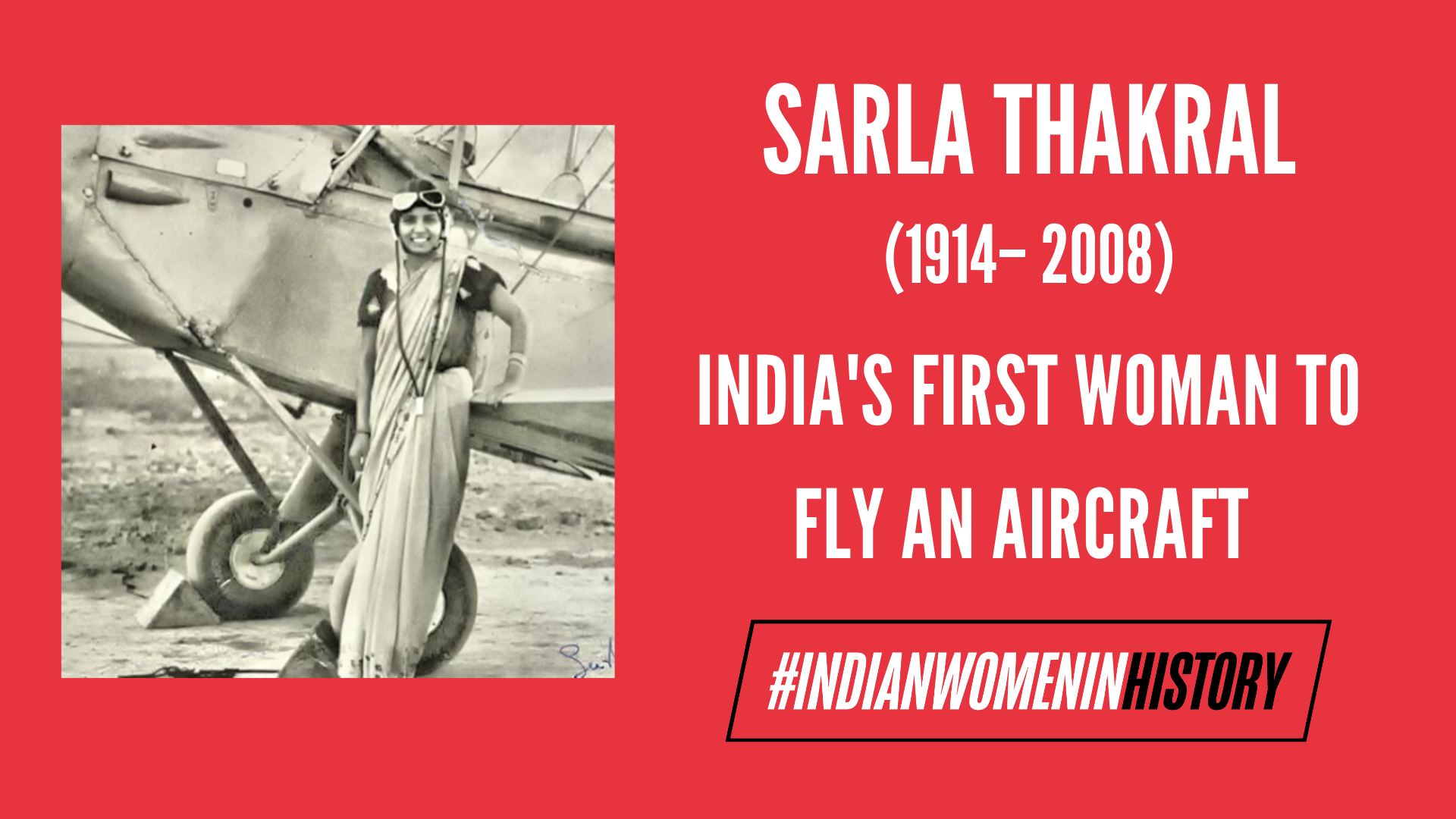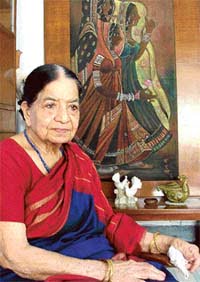Which country do you think has the highest number of women pilots in the world? The US? The UK? Germany, maybe? The answer to the question would be… India. Not only does India has the highest percentage of women commercial pilots in the world today, but it is also more than double that of the global average. According to the data released by the International Society of Women Airline Pilots in 2018, the percentage of women commercial pilots in India is 12.4%, while the global percentage is only 5.4%. When you think of Indian women in aviation, names like Prem Mathur, Durba Banerjee, and Padmavathu Bandopadhyay come to mind. Mathur was the first Indian woman to become a commercial pilot in 1947, Banerjee became the first woman pilot of Indian Airlines in 1956, and Bandopadhyay was the first woman officer of the Indian Air Force to be promoted to the rank of Vice Marshal in 2002- all of them leaving their mark in the skies and opening them for millions of other Indian women. But who was the woman who paved the way for women pilots like Mathur, Banerjee and Bandhopadhyay? It was Sarla Thakral, who, back in the year 1936, at only the age of 21, became the first Indian woman to fly an aircraft and laid the groundwork for Indian women to enter the field of aviation.
Early Life
Not much is known about the early years of Sarla Thakral’s life. She was born in Delhi in 1914, when India was still under British Raj. There is not much information available about Thakral’s childhood or adolescent years, just that she got married to P.D. Sharma at the age of 16. After her marriage, she moved to Lahore to live with her husband’s family. So how did young Sarla make history by becoming the first Indian woman to become a pilot? Sharma’s family was actually a family of pilots, nine in total! Sharma himself was, in fact, India’s first airmail pilot. He encouraged his wife to take the family tradition forward. Since he was too occupied with his flying assignments to give her lessons, her father-in-law enrolled Sarla in the local flying school.
Sarla Thakral turned out to be a natural pilot. After only eight hours and ten minutes of training, her instructor deemed her ready to fly solo! Sarla, clad in a sari, climbed into the cockpit of a Gypsy Moth plane. She proceeded to climb to the required altitude and managed to land the plane on her own, passing her first solo with flying colours. She then underwent intensive training and successfully earned her “A” license after accumulating more than 1,000 hours of flying, becoming the first Indian woman to ever do so, that too at the age of 21.
Sarla Thakral turned out to be a natural pilot. After only eight hours and ten minutes of training, her instructor deemed her ready to fly solo! Sarla, clad in a sari, climbed into the cockpit of a Gypsy Moth plane.
Journey Back Home
Unfortunately, in the year 1939, Captain Sharma was killed in an airplane crash, but Sarla persevered and travelled to Jodhpur to train for her commercial pilot’s license, hoping to make a career in aviation. Sadly, the Second World War soon broke out and all flying was suspended. So Thakral returned to Lahore and enrolled herself in the Mayo School of Art where she trained in the Bengal school of painting and obtained a diploma in fine arts. She also started a business of designing and selling costume jewellery that was popular among Indian women, eventually dabbling into decorating saris too.
When India gained Independence in the year 1947, Sarla was still living in Lahore, which was now in Pakistani territory- because of the Partition of India, which had created the two independent states of Pakistan and India. Thakral’s neighbour, worried about her safety because she was a Hindu, warned her of potential threats and advised her to leave Lahore with her daughters. Soon, Sarla and her daughters got on a train headed to Delhi and came back to the city where she was born.
Also read: Snehalata Reddy: The Fearless Woman Who Fought Against 1975 Emergency |#IndianWomenInHistory
Starting Anew
After having safely reached Delhi, she reestablished her business in the capital. Her work was extremely sought after, with some of her clientele being the likes of Vijay Lakshmi Pandit. In an interview with The Tribune, she talked about her creations. “I dabbled in designing costume jewellery, which was not only worn by the who’s who of that time, but also supplied it to Cottage Emporium for 15 years. After that I took to block printing and the sarees designed by me were well sought after. This too continued for 15 years. Then I began designing for the National School of Drama and all along I kept painting, “ she had said. She also had a fondness for writing out shlokas from the Vedas and gifting it to her friends.

Image Source
Sarla, who was also known as Mati, was a symbol of strength even in her 90s. She believed in doing things herself, saying that work kept her busy and helped her fight loneliness. She was even honoured for being the oldest yet the fittest person in her neighbourhood. It was during the same Tribune interview that she had divulged her motto- “Ever since I was a girl guide in school, my motto was: always be happy. It is very important for us to be happy and cheerful. After all we humans unlike animals have been blessed with the gift of being able to laugh. This one motto has seen me tide over the crises in my life.”
Sarla Thakral passed away on March 15, 2008, at the age of 94, leaving a glorious legacy behind. Juggling the roles of a wife, a mother, a pilot and eventually a successful businesswoman, she not only inspired other women to navigate the skies, but also became an epitome of perseverance and resilience.
Also read: Captain Prem Mathur: The Woman Who Swore To Fly High|#IndianWomenInHistory
References
About the author(s)
Purnima is a wannabe writer and a want-to-be cat mom.





